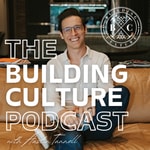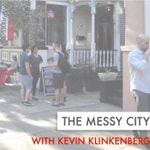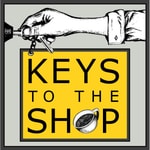The Building Culture Podcast – Details, episodes & analysis
Podcast details
Technical and general information from the podcast's RSS feed.

The Building Culture Podcast
Austin Tunnell
Frequency: 1 episode/14d. Total Eps: 45

Recent rankings
Latest chart positions across Apple Podcasts and Spotify rankings.
Apple Podcasts
🇺🇸 USA - design
26/07/2025#67🇺🇸 USA - design
25/07/2025#43🇺🇸 USA - design
24/07/2025#26🇺🇸 USA - design
23/07/2025#35🇺🇸 USA - design
22/07/2025#76🇺🇸 USA - design
21/07/2025#49🇺🇸 USA - design
20/07/2025#39🇺🇸 USA - design
19/07/2025#60🇺🇸 USA - design
18/07/2025#33🇺🇸 USA - design
07/07/2025#100
Spotify
No recent rankings available
Shared links between episodes and podcasts
Links found in episode descriptions and other podcasts that share them.
See all- https://www.instagram.com
1034 shares
- https://saifedean.com/
178 shares
- https://saifedean.com/courses
111 shares
- https://www.buildingculture.com/
70 shares
RSS feed quality and score
Technical evaluation of the podcast's RSS feed quality and structure.
See allScore global : 48%
Publication history
Monthly episode publishing history over the past years.
#23 Sara Bega: Las Catalinas - Building a Stunning Car-Free, Kid-Friendly, Multi-Generational Town
jeudi 22 août 2024 • Duration 01:22:56
Las Catalinas might be the most beautiful town built in the 21st century. And my guest today, Sara Bega, has stewarded its evolution as Town Architect for a decade. Las Catalinas is a car-free, kid-friendly, multi-generational community in Costa Rica. Their goal is to create a pedestrian-first environment that maximizes kid freedom and allows for independent exploration and discovery. The town is built on 20% of the 1200-acre site, with a mix of houses, flats, hotels, and shops.
We discuss Sara’s professional journey, and the principles and practices behind developing such a stunningly beautiful and human neighborhood that serves as an inspiration and example for what is possible today.
If you do anything today, just click on this link so you can see the town. It stands as a testament to the beauty humans can cultivate when they set their mind to it: Beach Town in Guanacaste, Costa Rica | Las Catalinas (lascatalinascr.com)
TAKEAWAYS
Creating a car-free, kid-friendly community allows for independent exploration and fosters curiosity and connection with nature.
A pedestrian-first environment benefits not only children but also adults and families, creating a sense of community and connection.
Las Catalinas is a successful example of a car-free community, with a mix of houses, flats, hotels, and shops built on a 1200-acre site.
The community achieves car-free living through walkability, valet services, and emergency vehicle access.
The town architect's role is to oversee the design and planning of the community, ensuring a balance between privacy, walkability, and optimized views. Creating a sustainable and adaptable community requires prioritizing human experience and connection.
Designing a walkable town with a mix of residential and commercial spaces fosters a sense of community.
The legal structure of a town should allow for flexibility and adaptability over time.
Trust in human intelligence and the ability to solve problems is crucial for the success of a community.
Creating a sense of place involves considering the local climate, using natural materials, and designing for the long term.
CHAPTERS
00:00 Introduction to Las Catalinas
09:46 Creating a Kid-Friendly Community
27:56 Shifting Conversations and Culture
39:48 Solving for Walkability, Privacy, and Optimized Views
42:16 Reversing and Backing into Codes and Legal Structure
45:17 Creating a Clear Legal Structure for Ownership and Responsibility
50:10 Treating a Town as a Town
55:38 Balancing Prevention and Allowing the Best to Happen
01:00:37 Guiding a Town's Growth and Adaptation
01:06:21 Allowing a Town to Grow and Change
01:10:56 Creating Timeless and Sustainable Architecture
01:19:19 Approaching Life with Courage
CONNECT WITH SARA & SHOW RESOURCES
Instagram: https://www.instagram.com/begadesignstudio/
LinkedIn: https://www.linkedin.com/in/sarabega/
Las Catalinas: https://www.lascatalinascr.com/
Notre Dame School of Architecture: https://architecture.nd.edu/
CONNECT WITH BUILDING CULTURE
https://www.buildingculture.com/
https://www.instagram.com/buildingculture/
https://twitter.com/build_culture
https://www.facebook.com/BuildCulture/
CONNECT WITH AUSTIN TUNNELL
Newsletter: https://playbook.buildingculture.com/
https://www.instagram.com/austintunnell/
https://www.linkedin.com/in/austin-tunnell-2a41894a/
https://twitter.com/AustinTunnell
SPONSORS
Sierra Pacific Windows: https://www.sierrapacificwindows.com/
One Source Windows: https://onesourcewindows.com/
#22 Alan Pullman: Creating Meaningful, Mixed-Use Infill Projects that Make Our Cities Better.
jeudi 8 août 2024 • Duration 01:13:32
Today I get to speak with Alan Pullman, founder of Studio One Eleven, an architecture, urban design and landscape architecture practice focused on human scaled, mixed-use infill projects. They have a truly impressive portfolio of work. I love their “practice themes” which I think will resonate with many of you: housing for all, building community + place, renewing the public realm, 21st century mobility, and equitable practice.
I was truly inspired by this conversation with Alan, particularly around the community integration and engagement they cultivate in their office. He intentionally moved the practice out of their “ivory tower” and down into the heart of the community, sharing their office space with artists and facilitating all kinds of community-wide events and workshops. It’s given me vision for how I want Building Culture to evolve.
Alan and his team work closely with developers around the country looking to do difficult and messy – but meaningful – infill projects. They relish the mess. And, between running a sizeable practice and doing some of their own development projects, I was extremely impressed with Alan’s practical approach (you know, understanding that the economics have to work to do the project!). They strike the right balance between idealism + pragmatism to actually pull off incredible projects, and keep people at the center of what they do and why they do it.
I hope you find this episode as inspiring as I did!
TAKEAWAYS
Reinvesting in cities and putting people at the center of architecture and urban design is crucial for creating meaningful and impactful spaces.
Studio One Eleven specializes in infill development, mixed-use projects, and adaptive reuse, focusing on creating places for people and collaborating with developers and public-private partnerships.
Affordable housing development is complex and requires specialized knowledge and collaboration with various funding sources, such as state, city, and federal programs.
Collaboration and agility are essential in the design process, allowing for co-creation with clients and the ability to adapt to changing needs and circumstances. Studio One Eleven focuses on incremental development and creating human-scale cities.
The firm has transformed their own office into a community space, hosting events, workshops, and an artist-in-residence program.
They are passionate about creating places for people and breaking away from the traditional, car-centric approach to city planning
CHAPTERS
00:00 Introduction
00:57 Studio One Eleven: Focusing on Infill Development and Community Impact
06:04 The Evolution of Studio Eleven: From Large Retail Projects to Community Impact
19:14 Challenges and Opportunities in Affordable Housing Development
32:41 Collaboration and Agility: Keys to Successful Design and Development
37:29 Incremental Development and Human-Scale Cities
38:56 The Financialization of Architecture and Cities
39:23 Curating the Right Mix of Tenants
43:10 Transforming Their Office into a Community Space
48:36 Building Connections and Social Capital
53:28 Creating Places for People
01:05:33 Optimism for the Future and Opportunities for Progress
CONTACT ALAN & STUDIO ONE ELEVEN
Website: https://studio-111.com/
https://www.instagram.com/studiooneeleven/
https://www.linkedin.com/in/alan-pullman-06197159
https://www.linkedin.com/company/studio-one-eleven
https://www.facebook.com/studioneleven/
CONNECT WITH BUILDING CULTURE
https://www.buildingculture.com/
https://www.instagram.com/buildingculture/
https://twitter.com/build_culture
https://www.facebook.com/BuildCulture/
CONNECT WITH AUSTIN TUNNELL
Newsletter: https://playbook.buildingculture.com/
https://www.instagram.com/austintunnell/
https://www.linkedin.com/in/austin-tunnell-2a41894a/
https://twitter.com/AustinTunnell
PODCAST SPONSORS
Sierra Pacific Windows: https://www.sierrapacificwindows.com/
One Source Windows: https://onesourcewindows.com/
#13 Philippe Block: The Incredible Future of Sustainable Construction
Season 1 · Episode 13
jeudi 4 avril 2024 • Duration 01:14:43
I met Philippe Block while studying historic masonry structures in Spain last summer. He presented his work and I was blown away. He is a pioneering structural engineer who, as part of his research group Block Research Group, is inventing the future of sustainable construction by blending old knowledge and precedent with new technology, materials and innovation. He's BUILDING off of thousands of years of architectural innovation and deepening our knowledge of how structures really work, with stunning results. And what makes it so impressive is he isn't just doing this in a research lab somewhere--though that is where the ideas are refined--he's implementing them in the real world. Not only is that very difficult to do, overcoming all the obstacles, it also takes a tremendous amount of courage. When I say "the building industry is broken," as I often do, what Phillipe is doing is part of the solution--he's part of pioneering and inventing the future that doesn't exist yet. Enjoy!
Sign up for my bimonthly newsletter here to learn more! PHILLIPE'S BIO Philippe Block is a full professor of Architecture and Structures and head of the Institute of Technology in Architecture (ITA) at ETH Zurich, where he co-leads the Block Research Group (BRG) with Dr. Tom Van Mele.
He studied architecture and structural engineering at the Vrije Universiteit Brussel (VUB) in Belgium and at the Massachusetts Institute of Technology (MIT) in the US, where he earned his PhD in 2009. The BRG develops sustainable and circular construction solutions through the advancement of computational structural design and innovation in digital fabrication and construction. Specific expertise includes computational form finding, discrete masonry, graphic statics, architectural and structural geometry, digital fabrication and construction, and open-source computation. Philippe and Tom translate their research into practice, with the consultancy Foreign Engineering and the ETH spin-off VAULTED. Most significant is the development of the Rippmann Floor System (RFS), a low-carbon-footprint, fully circular prefabricated concrete floor solution CHAPTERS 00:00 Introduction and Problem Statement 03:10 Three Tenets: Strength through Geometry, Material Effectiveness, and Circular Construction 09:02 Comparison of Concrete and Steel Floor Systems 17:36 The Rippman Floor System 27:29 Combining Architecture and Engineering 32:19 Thinness and Prefabrication of the Rippman Floor System 38:59 Rediscovering Structural Form and Graphic Statics 50:24 Opportunities to Learn Graphic Statics 51:28 Integration of Graphic Statics in Projects 52:21 Opportunities for Self-Education 52:48 New Master of Advanced Studies in Structural Computation 53:17 Focus on Outreach and Education 54:34 The Importance of Open Source and Collaboration 56:29 Graphic Statics as a Tool for Engineering 59:19 The Maturity of Tools for Arch Structures 01:01:16 Challenges in Accepting New Approaches 01:04:07 The Urgency of Innovation in Construction 01:06:35 The Excitement of Discovering and Learning 01:07:47 Following Philippe Block's Work RESOURCESBlock Research GroupVaulted Unreinforced Concrete Floor SystemBRG Githup Compass ResourcesBook on Graphic Statics: Form and Forces: Designing Efficient, Expressive Structures. Book on Guastavino Vaulting by John Ochsendorf MIT's Morningside Academy For Design w/ John Ochsendorf: Phillipe Block Lecture - ETH Zurich, Block Research Group Phillipe Block Lecture - Stone Skins: New Masonry Shells Armadillo Vault Phillipe Block on Linked InCONNECT WITH BUILDING CULTURE https://www.buildingculture.com/ https://www.instagram.com/buildingculture/ https://twitter.com/build_culture https://www.facebook.com/BuildCulture/ CONNECT WITH AUSTIN TUNNELL https://www.instagram.com/austintunnell/ https://www.linkedin.com/in/austin-tunnell-2a41894a/ https://twitter.com/AustinTunnell
#12 Ruben Hanssen: Dutch City Building; Beauty & Culture; Everyday Experience; Tradition v Modernity
jeudi 21 mars 2024 • Duration 01:08:32
Today I interview Ruben Hassan, a Dutch podcaster and founder of the Aesthetic City podcast. Ruben shares his journey from being an engineer to becoming a full-time podcaster and filmmaker. We discuss the state of construction and development in the Netherlands and the importance of creating beautiful and sustainable built environments. We also explore the day-to-day life in the Netherlands, including transportation, education, and the value of beauty in society. The conversation covers various themes related to the built environment, society, and culture. Some of the key takeaways include the importance of prioritizing people and their well-being in urban planning and design, the need to address environmental and health issues alongside climate change, the tension between tradition and modernity, the role of institutions in shaping the world, and the emergence of countercultures as a response to societal challenges. We also touch on the Dutch farming protests and the value of different perspectives in shaping the built environment. TAKEAWAYS - Ruben Hassan transitioned from being an engineer to a full-time podcaster and filmmaker, focusing on improving the built environment. - The Aesthetic City podcast aims to foster the creation of beauty and true sustainability in architecture and urbanism. - Dutch cities prioritize local, timeless, traditional, and human-centered design principles and traditions. - The Netherlands has a more gentle density approach to urban planning, with cities consisting of mostly five-story buildings. - The Dutch value the ordinary and find beauty in the simple, everyday things. - Day-to-day life in the Netherlands includes a strong emphasis on cycling, integrated neighborhoods, and a sense of community. - Beauty is not just a nice-to-have, but an essential aspect of creating livable and sustainable cities. - The Dutch approach to architecture and urbanism is influenced by their history of religious tolerance, distributed wealth, and residential neighborhoods. Prioritize people and their well-being in urban planning and design. - Address environmental and health issues alongside climate change. - Recognize the tension between tradition and modernity. - Consider the role of institutions in shaping the world. - Acknowledge the emergence of countercultures as a response to societal challenges. CHAPTERS 00:00 - Introduction 03:02 - Transitioning to a New Chapter in Life 05:21 - The Issues with Construction and Development 08:24 - Dutch Cities and the Built Environment 09:47 - Urban Planning in the Netherlands vs. the United States 14:28 - The Importance of Building Places People Want to Go 16:08 - Day-to-Day Life in the Netherlands 21:36 - The Height and Density of Dutch Cities 24:09 - The Cultural Heritage of Dutch Cities 30:40 - The Value and Importance of Beauty 38:36 - Perspectives of Older and Younger Generations 44:48 - The Dutch Farmers' Protests 47:27 - The Nitrogen Issue and Farming Practices 48:31 - Government Actions and Public Opinion 50:16 - Tyranny and Populism 51:45 - Disconnect Between Elites and Regular People 53:32 - The Dark Side of Modernity 55:10 - Tradition and Innovation 55:49 - Hope for Change and Paradigm Shift 59:45 - Upcoming Plans and Trip to the US 01:03:31 - Recommended Cities in the Netherlands 01:07:03 - Dutch Perception of Americans RESOURCES 1. Recommended Book: North Atlantic Cities by Charles Duff 2. Recommend Video: Why Beauty Matters by Roger Scruton 3. Painting: The Little Streets by Vermeer 4. Examples of some wonderful NEW humanist cities: Cayala, Guatemala and Le Plessis-Robinson outside of Paris. 5. Recommended Dutch Cities: Utrecht, Leiden, Amersfoort, Harlem CONNECT WITH RUBEN - Website - Cayala Video - Le Plessis Video - Summer School CONNECT WITH AUSTIN https://linktr.ee/austintunnell https://twitter.com/AustinTunnell https://www.linkedin.com/in/austin-tunnell-2a41894a/ https://www.instagram.com/buildingculture/
#11 Thomas Dougherty: Infill Development; Smaller Scale & Vibrancy; Humanism
jeudi 7 mars 2024 • Duration 01:06:03
Today, I have friend and colleague Thomas Dougherty on the podcast. Last year Tom joined the Building Culture team as our lead Urban Designer. He studied architecture and urban design at Notre Dame and focused on inner block development and has become known as the "alley-guy" for his expertise in creating spaces in these areas. It's a great conversation focused on the centralization of capital in real estate and how that affects decision making, how we prioritize profits over people and most importantly what we can do differently to try and solve these issues. We chat about smaller scale development and the creation of smaller grained places that are essential for vibrant communities, as well as how our current infrastructure is unsustainable financially and how we will see the effects in the next few decades. We discuss infill development, local investment and rethinking the way we raise capital, and finally we dive into the potential for infill development like creating streets as spaces that can really create beautiful, wonderful places. People really can be enriching forces on our built environment and are capable of immense good and immense beauty- hope you enjoy the conversation! TAKEAWAYS - The centralization of capital in real estate development leads to decisions that prioritize maximum returns over human flourishing. - Smaller-scale development and the creation of smaller grained places are essential for building vibrant communities. - Current infrastructure is unsustainable and requires financial innovation to address its high costs. - Financing new urbanist projects is challenging due to the changing landscape of real estate finance. - Infill development offers opportunities for incremental growth and the revitalization of existing communities. - Local investment empowers individuals and strengthens communities. - Capital plays a significant role in shaping development and should be aligned with the values of creating human-scaled places. - Recognizing the potential of infill development and building streets as public spaces can create inviting and reflective environments. REFERENCES https://ioncommunity.com/ CONNECT WITH THOMAS DOUGHERTY https://www.innerblock.org/about CONNECT WITH BUILDING CULTURE https://www.buildingculture.com/ https://www.instagram.com/buildingculture/ https://twitter.com/build_culture https://www.linkedin.com/in/austin-tunnell-2a41894a/ https://www.facebook.com/BuildCulture/ https://www.tiktok.com/@buildingculture CONNECT WITH AUSTIN TUNNELL https://www.instagram.com/austintunnell/ https://www.linkedin.com/in/austin-tunnell-2a41894a/ https://twitter.com/AustinTunnell https://linktr.ee/austintunnell https://playbook.buildingculture.com/p/ready-fire-aim CHAPTERS 00:00 Introduction and Background 01:04 Becoming Known as the Alley Guy 05:01 The Concept of Accessory Dwelling Units (ADUs) 07:08 The Potential of Alleys for ADUs 09:05 The American Alley Hidden Resource 12:26 The Impact of Experiencing Human Scale 19:34 Reimagining Suburbs as Villages and Market Towns 30:04 The Limitations of Subdivisions 33:37 The Importance of Language and Advocacy 38:32 Empowering Individuals in Shaping the Built Environment 39:31 The Centralization of Capital 41:25 The Importance of Small-Scale Development 43:20 The Unsustainability of Current Infrastructure 45:52 The Need for Financial Innovation 47:23 The Difficulty of Financing New Urbanist Projects 50:15 The Potential of Infill Development 52:20 The Power of Local Investment 55:51 The Role of Capital in Development 57:19 Recognizing the Opportunities in Infill Development 59:52 Building Streets as Public Spaces
#10 Coby Lefkowitz: Beliefs Inform Building; Personal Agency; Creating a Better World for All
jeudi 22 février 2024 • Duration 01:38:26
I'm thrilled to have Coby Lefkowitz on the show today. Coby is an urbanist, real estate developer, writer, and consultant based in New York, and I would add, all around optimist. I've been following him on X for several years, and while it was our first conversation it felt like we had known each other much longer. We are saving the technical conversation on building and development for a time down the road, and today we really focused on the culture around building well and the obstacles that come with it. We both share this idea, in a lot of ways, that the best is just ahead if we can align our beliefs as a culture. TAKEAWAYS: - Urbanism and planning play a crucial role in creating beautiful and sustainable cities. - It is important to dream and not settle for utilitarian outcomes in city building. - A cultural shift towards more thoughtful and human-centered city building is needed. - Dopamine plays a significant role in motivation and addiction, and understanding its effects can help us make better choices. - Finding beauty in the ordinary and embracing everyday simplicity can enhance our appreciation of our surroundings. - Background buildings, when designed with quality and simplicity, can provide a strong foundation for vibrant communities. - Tradition and innovation are not mutually exclusive; tradition represents proven innovation that has stood the test of time. - Architecture has the power to shape our experiences and create intrigue and stimulation in our surroundings. - Small actions, such as adding potted plants or personal touches, can transform and benefit streets and communities. - Overcoming fatalism and embracing choice can empower individuals to shape their communities and create meaningful change. - Despite the challenges we face, history shows that humanity has the ability to rise to the occasion and find solutions. - Optimism and a proactive mindset are essential for creating a better future. CONNECT WITH COBY: Twitter
https://cobylefkowitz.com COBY'S FAVORITES: * Habits: Daily gym & reading * Top Podcasts: - Basketball theme - Nick's NBA podcast * Books: - Welcome to Your World: Sarah Williams Goldhagen - The School of Llife: An Emotional Education CHAPTERS 00:00 Introduction and Background 04:30 The Importance of Urbanism and Planning 08:08 The Need to Dream and Overcoming Barriers 17:33 The Cost of Development and the Value of Design 25:00 The Culture of Consumption and the Importance of Good 29:35 The Challenges of Financing and the Need for Coherent Vision 35:24 The Importance of Conversations and Understanding Perspectives 41:11 The Cultural Shift Needed for Sustainable Development 42:04 The Dopamine Effect and Addiction 43:26 The Value of Everyday Beauty 47:12 The Role of Background Buildings 50:12 The Balance Between Tradition and Innovation 53:07 The Impact of Architecture on Experience 56:20 The Importance of Restraint and Punctuation in Design 57:49 The Power of Small Actions in Shaping Communities 01:03:06 Overcoming Fatalism and Embracing Choice 01:05:32 The Value of Tradition and the Potential for Change 01:10:01 The Impact of Individual Actions on Shaping Places 01:14:01 The Journey of Making a Difference 01:18:36 The Progress and Hope in Urban Planning 01:22:19 Introduction and Background 01:23:04 Interest in Architecture and Urban Planning 01:24:27 Books That Have Changed the Way Coby Thinks 01:25:36 Inspiring Trips and Observations on the Built Environment 01:31:25 Philadelphia as an Example of Urban Planning 01:33:40 Optimism for the Future 01:36:25 Closing Remarks CONNECT WITH BUILDING CULTURE https://www.buildingculture.com/https://www.instagram.com/buildingculture/ https://twitter.com/build_culture https://www.facebook.com/BuildCulture/ https://www.tiktok.com/@buildingculture CONNECT WITH AUSTIN TUNNELL Instagram LinkedIn Twitter
Building Culture Playbook
Building Culture Instagram
#9 Sam Day Pt. 2: Retrofitting Suburbia, Importance of Centers, Architecture School & Development
Season 1 · Episode 9
vendredi 9 février 2024 • Duration 56:51
#8 Sam Day Pt 1: Tackling Housing, Retrofitting Suburbia, Land Value Tax & Infill Development
jeudi 1 février 2024 • Duration 55:43
In the first half of today's episode, I had the pleasure of speaking with a friend and colleague, Sam Day. Sam is an architect, urbanist, and infill developer based in Oklahoma City--a rare combination of someone designing buildings (architect), creating spaces with those buildings (urbanist), and actually facilitating them coming out of the ground, including buying land, figuring out financing, leasing up, etc (development). Sam is also very philosophical, and it's easy for us to talk for hours and debate ideas. He is both an ideas guy and an executor, which is another rare combo that leads to unique perspectives and conversation. First we explore Sam's career trajectory, his first infill project of a quad/4plex self financed with an FHA loan that he used as his primary residence (the development hack for those who don't have a ton of cash--a la R John Anderson and the Incremental Development Alliance). We dive into the concept of missing middle housing, explore the various challenges small developers face in this sector, discuss creating vibrant community centers, the pros and cons of a land value tax, as well as what we mean by human scale and the magic of 3 and 4 story buildings (NOT 20+almost stories). In part 2 we broach ideas like the difficulties in controlling land and the financialization of real estate, and the potential transformation of suburbia through e-bikes and distributed shopping centers, envisioning a more connected and accessible community. TAKEAWAYS - Transitioning from architecture to development requires a diverse skill set, including financial modeling and understanding zoning regulations. - Small developers, such as architects and tradespeople, are well-positioned to address the missing middle housing gap. - Implementing a land value tax can incentivize landowners to develop their properties more efficiently and discourage land speculation. - Retrofitting suburbia requires careful planning and consideration of existing neighborhoods and infrastructure. RESOURCES https://www.linkedin.com/in/samuel-day https://www.instagram.com/_sam_day/ https://www.wheelerdistrict.com/ CHAPTERS 00:00 Introduction and Career Path 03:04 Becoming a Developer 08:05 The Concept of Missing Middle 17:06 Land Value Tax 25:01 Retrofitting Suburbia 36:26 Concerns about Land Value Tax 43:15 The Need for Solutions 47:12 The Future of Suburbia 48:40 Retrofitting Suburbia 50:17 Transfer of Development Rights 51:44 The Rule of 10,000 53:10 The Magic of Three-Story Buildings 54:43 Creating Centers in Suburbia CONNECT WITH BUILDING CULTURE Website: https://www.buildingculture.com/ Instagram: https://www.instagram.com/buildingculture/ X: https://twitter.com/build_culture TikTok: https://www.tiktok.com/@buildingculture CONNECT WITH AUSTIN TUNNELL Instagram: https://instagram.com/austintunnell LinkedIn: https://www.linkedin.com/in/austin-tunnell-2a41894a/ X: https://twitter.com/AustinTunnell Join the Movement to Build a Better World: https://playbook.buildingculture.com/subscribe
#7 R. John Anderson - An Insightful Journey From Tradesman to Developer
Episode 7
vendredi 26 janvier 2024 • Duration 01:29:12
Today I sit down with the infamous and inspiring R. John Anderson, also known as 'R John the Bad'. We dive into John's unique story, from his early days quitting high school to pursue his passion in the trades, to his transformative experiences as a developer and influential figure in urban planning.
I met John in 2016 at an Incremental Development Alliance workshop he was putting on in San Antonio--teaching normal folks how to be small-scale developers.
I love his message about "form follows finance", and that, while it is good to romanticize and dream, we also have to live in reality if we want to get anything done. 🔹 Key Topics: - John's early challenges and how they shaped his career - Impact of the 2008 financial crisis on his philosophy - Transition from tradesman to a successful developer - Insights on small-scale development and building sustainable communities - John's perspective on 'form follows finance' in urban planning 🔹 Connect with R. John Anderson: John's Blog: https://www.rjohnthebad.com/ Incremental Development Alliance: https://www.incrementaldevelopment.org/ 🔹 Timestamps: 00:01 - Introduction to John Anderson 01:06 - John's early life and entry into construction 03:15 - Shift to architecture and impact on development philosophy 05:25 - Experiences with large-scale projects and learning from failures 08:50 - Influence of Leon Kreer and the New Urbanism movement 14:28 - Insights on public service and infrastructure development 20:08 - The journey towards incremental development and small-scale projects 33:04 - Strategies for young developers in the current financial landscape 43:52 - The concept of 'form follows finance' in urban design 01:00:37 - Exploring opportunities in urban renewal and sprawl repair John has a lot of bits of wisdom and insight for anyone interested in architecture, urban planning, and sustainable development. Thanks a ton for coming on!
Don't forget to like, share, and subscribe if you support what we are doing at Building Culture.
Enjoy!
Connect with Building Culture on social media:
Website: https://www.buildingculture.com/
Instagram: https://www.instagram.com/buildingculture/
X: https://twitter.com/build_culture
TikTok: https://www.tiktok.com/@buildingculture
Connect with Austin Tunnell on Social Media
Instagram: https://instagram.com/austintunnell
LinkedIn: https://www.linkedin.com/in/austin-tunnell-2a41894a/
X: https://twitter.com/AustinTunnell
Join the Movement to Build a Better World: The Building Culture Playbook
#6 Matthew Myers - A Deep Dive on Community, Culture & Real Estate Development
lundi 8 janvier 2024 • Duration 01:17:13
Today I get to chat with my business partner and mentor Matthew Myers, a successful entrepreneur, syndicator and real estate developer of unique, infill projects. As a local developer renowned for his work on infill pocket neighborhoods, Matthew shares a wealth of knowledge and personal insights.
This episode is a blend of technical expertise, cultural commentary, and personal anecdotes, providing a unique perspective on urban development and its impact on community life.
Key Highlights:
Matthew Myers' Journey: From leadership training with Giant to real estate development, Discover Matthew's transition and his venture into developing neighborhoods like the Prairie at Post. Innovative Urban Developments: Learn about the Lark, the Ember, and other projects that redefine the concept of community living. Cultural Insights: Explore Matthew's views on the importance of design, the role of relationships in community building, and his personal experiences in overcoming challenges. Pocket Neighborhoods Explained: Understand the concept of pocket neighborhoods and how they foster a sense of identity and place. T he Future of Housing: Matthew discusses the diversity in housing options and how the built environment shapes social wellbeing. Personal Reflections: Gain insights into Matthew's personal growth, his approach to business, and his vision for mentorship in urban development.









